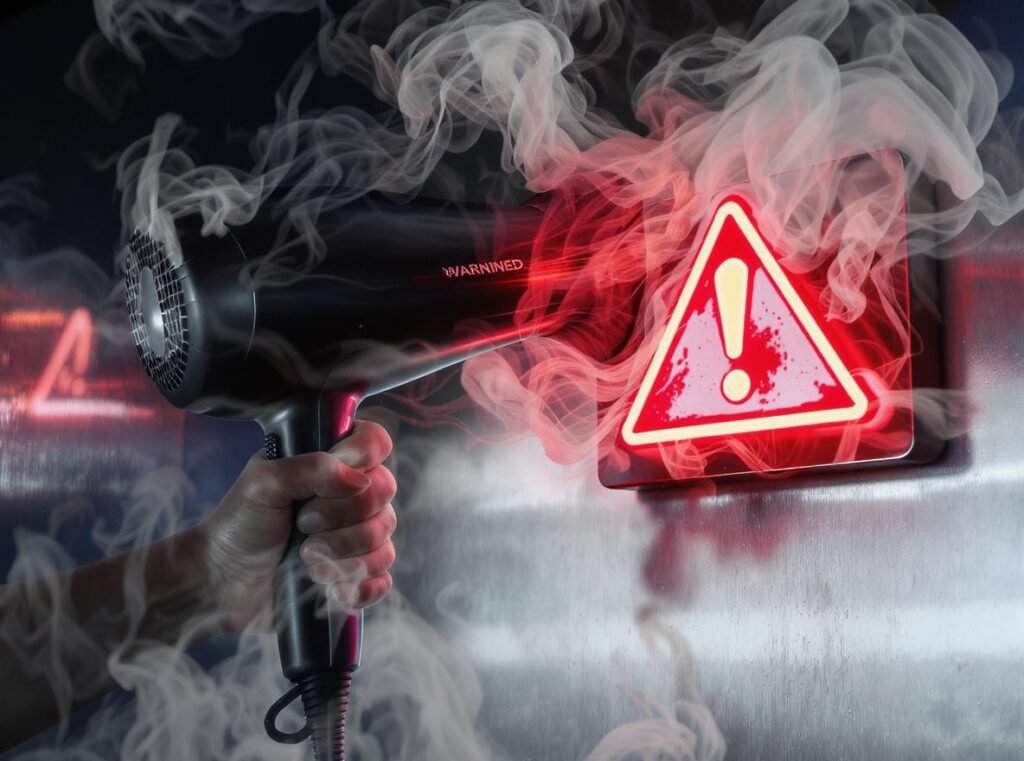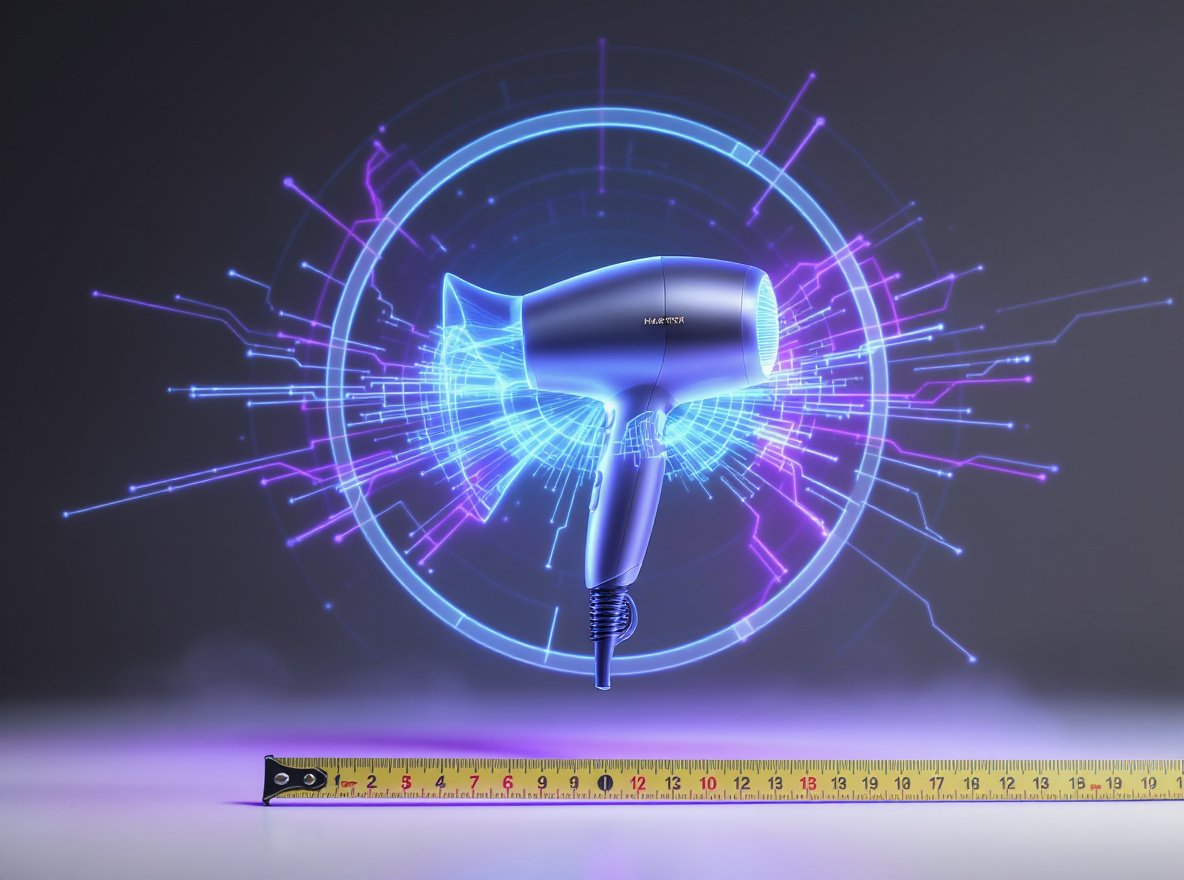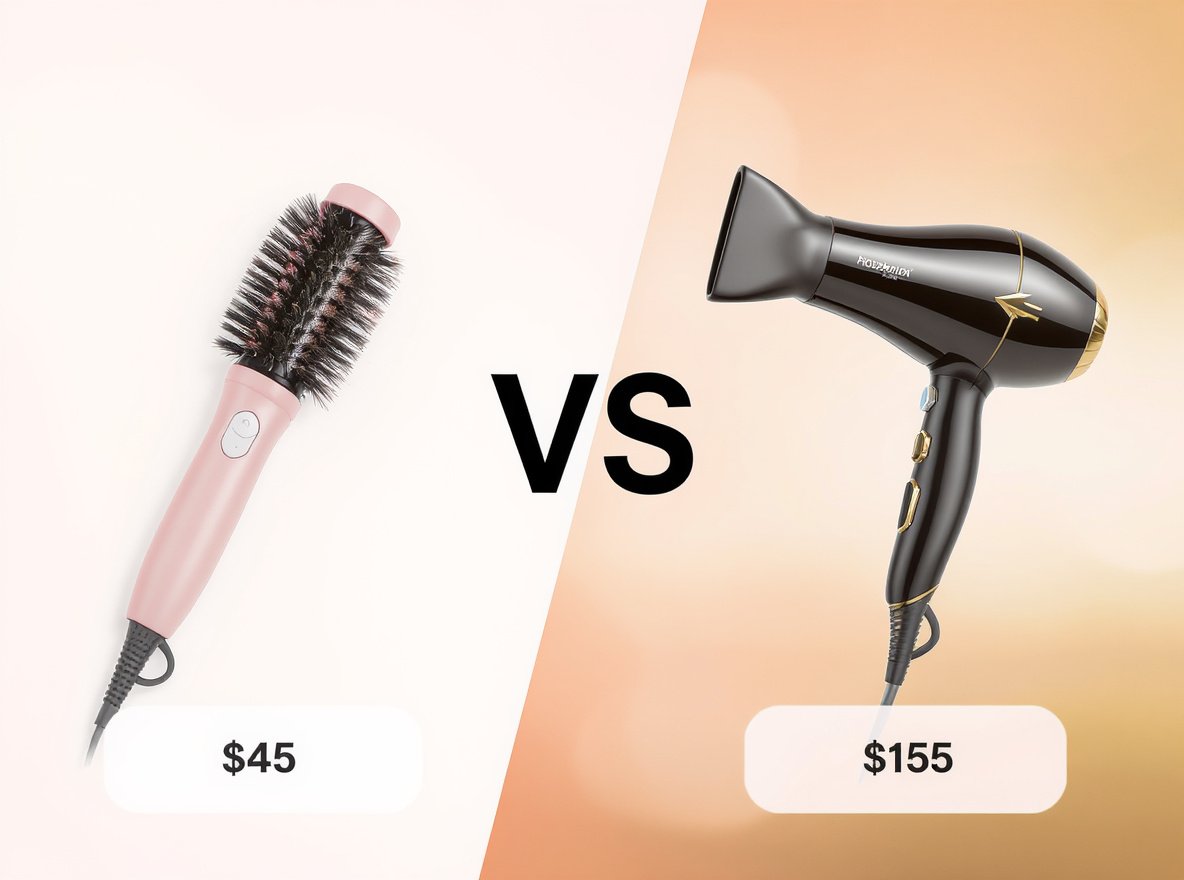A burning smell from your hair dryer is a serious safety warning that demands immediate attention. Whether you’re a salon owner, distributor, or retailer, understanding these critical safety protocols protects both your business and your customers from potential fire hazards.
Stop using the hair dryer immediately, unplug it, and allow it to cool completely. Never continue operating a device with burning odors, as this indicates overheating that can lead to fires, electrical hazards, or severe hair damage.
Let’s explore the comprehensive safety measures and solutions to address this dangerous situation effectively.
Table of Contents
ToggleWhy Does My Hair Dryer Smell Like Burning?
Understanding the root causes helps you identify whether the issue requires simple maintenance or immediate replacement.
Clogged air filters, age-related component deterioration, and overheating from blocked vents are the primary causes of burning smells in hair dryers. These problems range from easily fixable maintenance issues to serious safety hazards requiring professional attention.
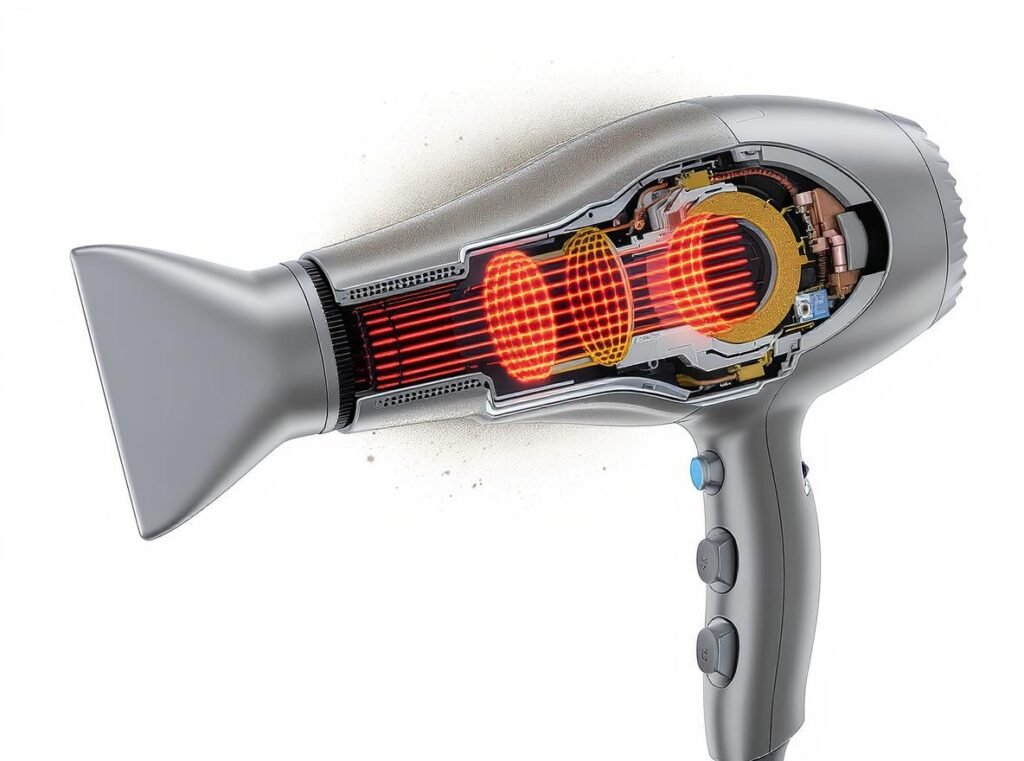
The most common culprit is dust and lint accumulation in the air intake filter. Hair particles, environmental dust, and debris collect over time, restricting airflow and causing the motor to work harder. When these particles contact the heating element, they burn and produce that distinctive odor.
Age-related deterioration becomes significant in hair dryers older than 5-6 years. As internal components wear out, the device becomes less efficient and may draw more electricity, leading to dangerous overheating. Worn motors, failing heating elements, and damaged mica sheets (insulating materials around heating wires) contribute to burning smells.
Overheating from blocked vents occurs when airflow becomes restricted during use. This happens when users place the dryer on soft surfaces or when lint completely blocks the intake vents, preventing proper heat dissipation.
| Cause | Risk Level | Typical Age Range | Immediate Action |
|---|---|---|---|
| Lint/Dust Buildup | Low-Medium | Any age | Clean filter thoroughly |
| Component Wear | Medium-High | 5+ years | Professional assessment |
| Blocked Vents | Medium | Any age | Clear obstructions, inspect |
| Electrical Issues | High | 3+ years | Discontinue use immediately |
New hair dryer considerations: Some new dryers emit slight burning smells during initial uses as manufacturing oils burn off heating elements. This should disappear after several uses, but persistent odors indicate manufacturing defects.
Is It Safe to Use a Hair Dryer That Smells Like Burning?
Safety experts unanimously agree that continuing to use a burning-smelling hair dryer is extremely dangerous.
Never use a hair dryer that smells burnt, as it indicates defective components that pose serious fire and electrical hazards. Hair dryers are among the electrical appliances most associated with home fires due to their combination of heat, dust accumulation, and high-power electrical components.
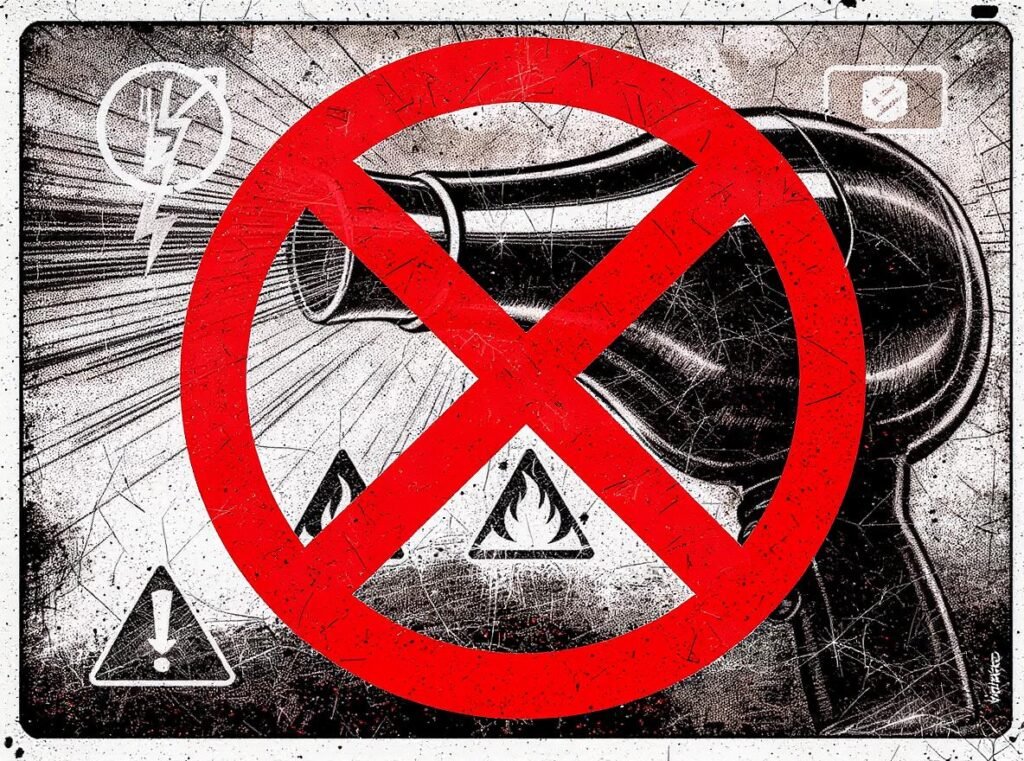
The burning smell serves as an early warning system for multiple dangerous conditions. Fire risk increases significantly when overheating components reach ignition temperatures. Dust and lint inside the device act as tinder, creating perfect conditions for electrical fires that can spread rapidly.
Electrical hazards multiply when overheating damages internal wiring. This increases risks of electrical shock, electrocution, and circuit damage that safety features cannot prevent. Modern hair dryers include overheating protection and thermal cut-off features, but if burning smells persist despite these safeguards, the device has reached dangerous failure levels.
Additional safety concerns include:
- Toxic fumes from burning plastic components and insulation materials
- Severe hair damage from inconsistent or excessive heat output
- Potential for burns from overheated exterior surfaces
- Risk of electrical shorts that can damage home electrical systems
Professional salons and retail businesses must establish strict protocols for removing potentially dangerous equipment from service immediately. Customer safety and liability concerns make this especially critical for commercial operations.
What Should I Do Immediately If My Hair Dryer Smells Like Burning?
Follow these urgent safety steps when you detect burning odors from your hair dryer.
Turn off the device immediately, unplug it from the outlet, and allow complete cooling before handling. These immediate actions prevent escalation to more dangerous situations like fires or electrical shorts.
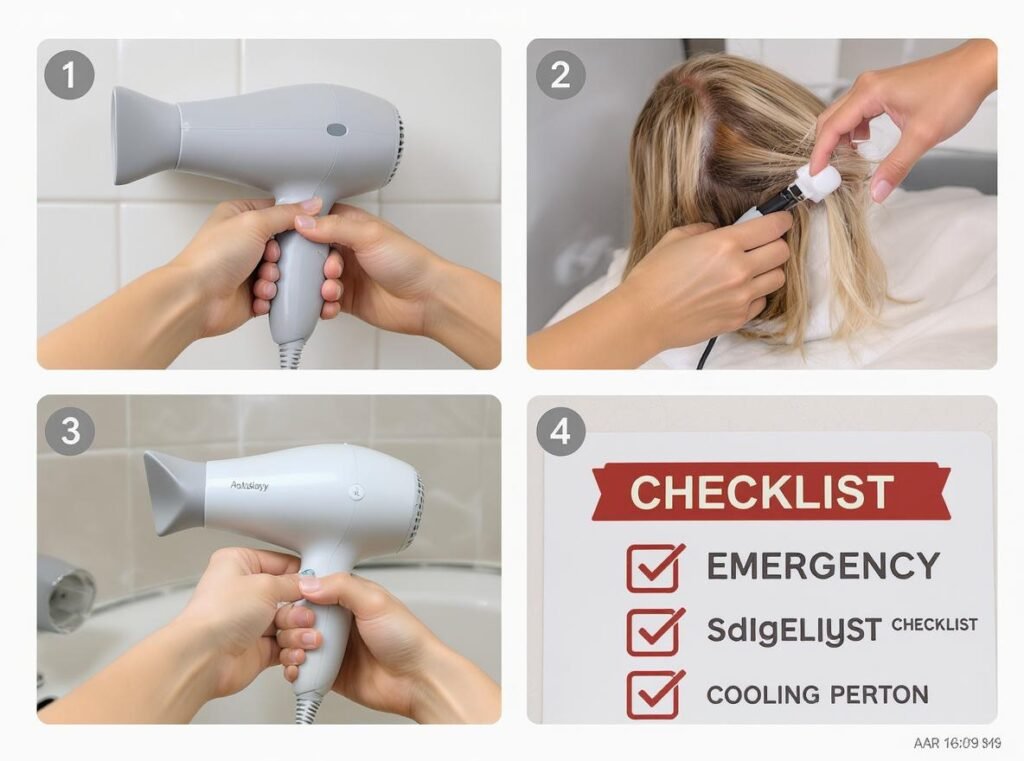
Emergency response protocol:
First, ensure the hair dryer is completely powered off and unplugged. Never attempt to continue using the device “just to finish” your styling session. The burning smell indicates components are already overheating beyond safe operational limits.
Safety assessment checklist:
- Check if the dryer automatically shut off during use (indicating overheating protection activated)
- Inspect the exterior for visible damage, cracks, melting, or discoloration
- Examine the cord and plug area for any burning odors or visible damage
- Note if the device feels excessively hot to touch
Reset procedure for some models:
If your hair dryer has a red reset button on the plug (ALCI safety feature), press it only after the unit has cooled completely. This safety feature trips when electrical leakage is detected and may resolve simple overheating issues.
Next steps depend on your findings:
- Clean the air filter thoroughly before any restart attempts
- If burning smell persists after cleaning and cooling, discontinue use permanently
- For business owners: document the incident and remove the device from service immediately
Never ignore these warning signs, as they indicate your hair dryer has moved beyond normal operational parameters into potentially dangerous territory.
How Do I Clean My Hair Dryer to Remove the Burning Smell?
Proper cleaning can eliminate burning smells caused by debris buildup, but only attempt this after ensuring the device has cooled completely.
Remove the lint cover and use a soft brush to clean the air filter thoroughly, as dust buildup is the most common cause of burning odors. This maintenance step resolves approximately 70% of burning smell complaints when performed correctly.
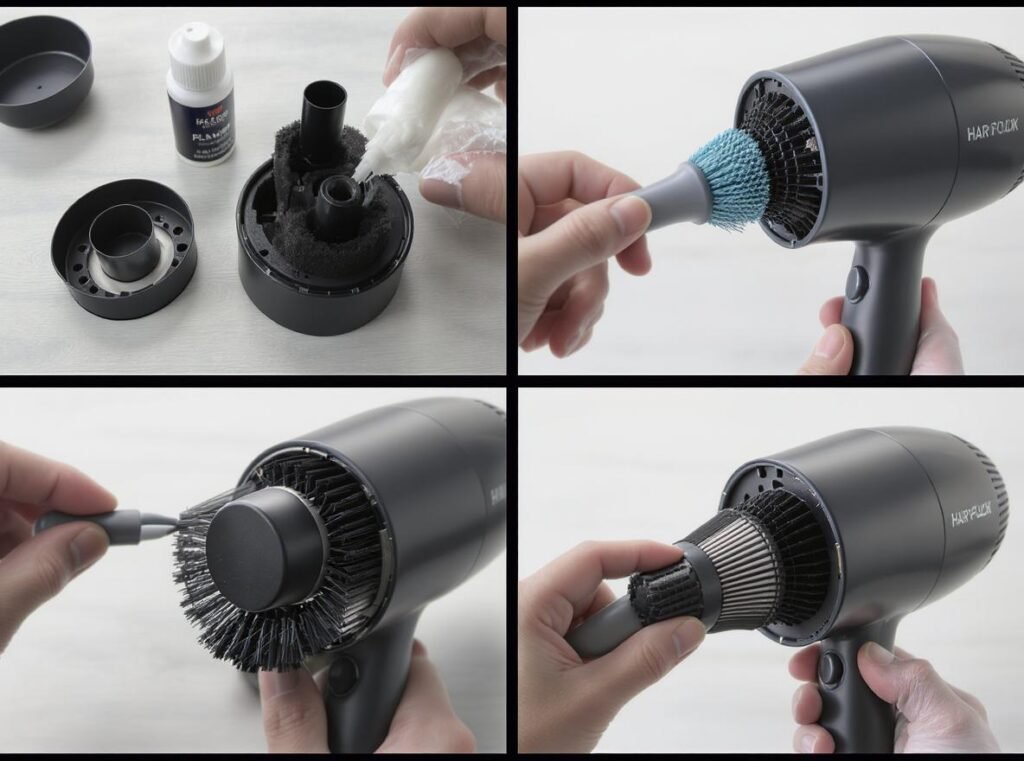
Preparation requirements:
- Ensure the dryer is unplugged and completely cooled (wait at least 30 minutes)
- Gather supplies: soft-bristled brush or clean toothbrush, vacuum with crevice attachment, damp cloth, mild soap solution
- Work in a well-ventilated area with good lighting
Step-by-step cleaning process:
Filter maintenance:
- Locate the air intake filter (usually on the back with a removable cap)
- Twist off the filter cap following directional arrows
- Remove the filter and place it on a clean towel
- Brush away visible dust and lint using gentle circular motions
- For heavily soiled filters, rinse with clean water and air dry completely
Internal cleaning:
- Use a vacuum crevice attachment to remove debris from inside the filter housing
- Work carefully to avoid damaging internal components
- Remove as much lint as possible from visible areas
Exterior maintenance:
- Wipe down all exterior surfaces with a damp cloth and mild soap solution
- Clean the nozzle and any attachments thoroughly
- Inspect the power cord for damage or debris accumulation
Maintenance schedule for optimal performance:
- Daily users: Clean monthly
- Regular users: Clean every 6-8 weeks
- Occasional users: Clean every 3-4 months
If thorough cleaning doesn’t eliminate the burning smell, the issue involves internal components that require professional service or complete replacement.
When Should I Replace My Hair Dryer Instead of Repairing It?
Several factors indicate replacement is more cost-effective and safer than attempting repairs.
Replace hair dryers older than 5-6 years or when repair costs approach 50% of replacement value, especially if burning smells persist after cleaning. Age-related component degradation makes older models increasingly unreliable and potentially dangerous.
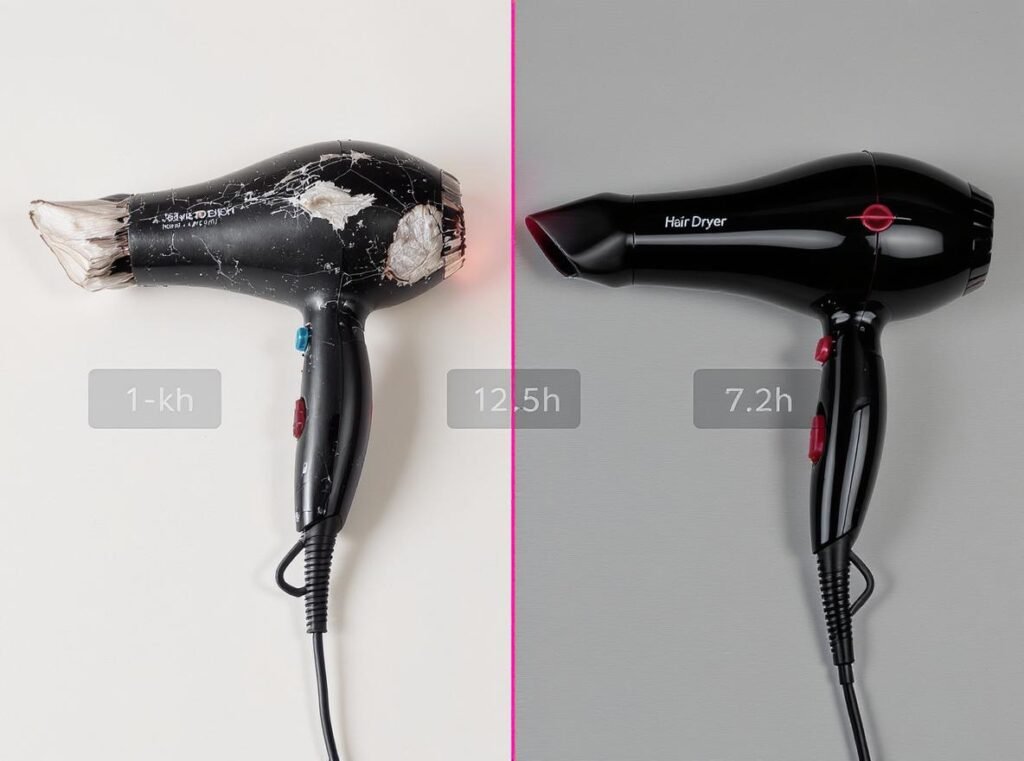
Age-based replacement guidelines:
- Consumer-grade dryers: Replace after 2-3 years of regular use
- Professional-grade dryers: Replace after 5-7 years of salon use
- Any dryer over 5-6 years old with persistent problems should be replaced
Safety-mandated replacement indicators:
- Persistent burning smells despite thorough cleaning
- Visible damage to housing, cord, or electrical components
- Electrical issues such as sparking, shocking, or frequent breaker trips
- Overheating that causes repeated automatic shutdowns
Performance degradation signals:
- Significantly reduced airflow despite maintenance
- Inconsistent heat output or temperature fluctuations
- Unusual operational noises (grinding, rattling, buzzing)
- Extended drying times compared to original performance
Cost-benefit analysis factors:
- Professional repairs typically cost 60-80% of new dryer prices
- Cheap drugstore dryers should always be replaced rather than repaired
- Warranty coverage may make replacement more economical
Business considerations for wholesale buyers:
- Liability concerns with refurbished electrical appliances
- Customer satisfaction issues with frequently malfunctioning equipment
- Opportunity costs of downtime during repairs
For businesses dealing with hair dryer distribution, consider offering trade-in programs or volume replacement discounts to maintain customer relationships while ensuring safety standards.
What Are the Signs of an Overheating Hair Dryer?
Recognizing overheating symptoms before burning smells develop helps prevent dangerous situations and equipment damage.
Excessive exterior heat, automatic shutdowns, and reduced airflow are early warning signs of hair dryer overheating. Modern dryers include thermal protection features, but recognizing these symptoms helps you take preventive action.
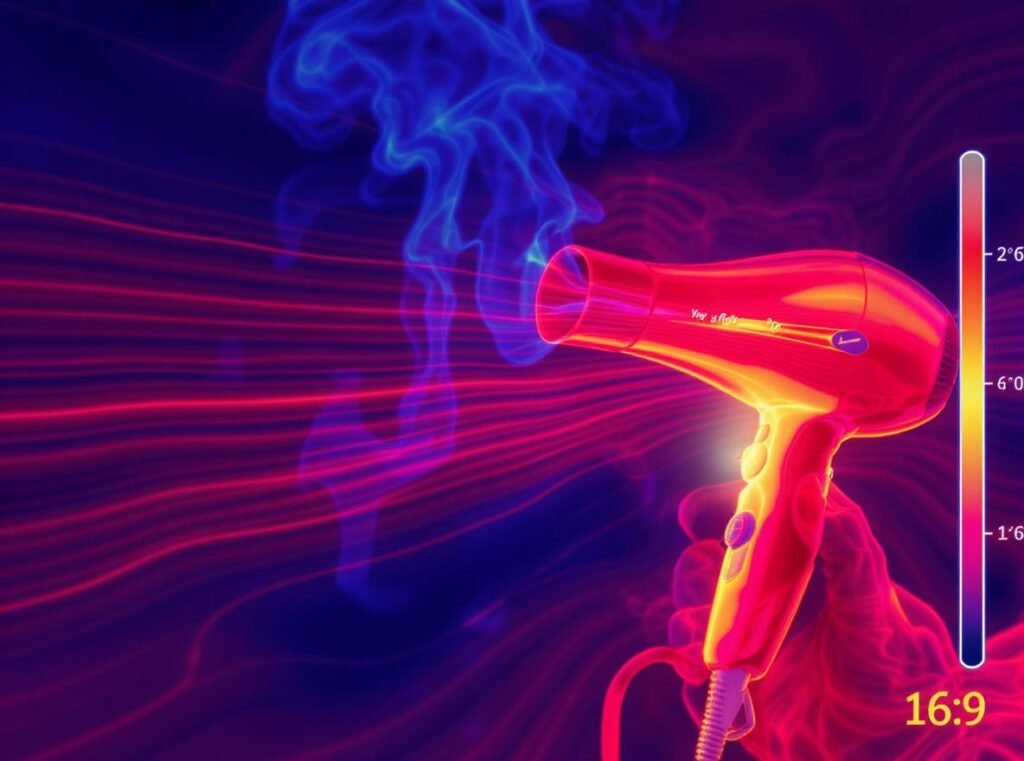
Physical warning indicators:
- Exterior housing becomes uncomfortably hot to hold during normal use
- Visible heat distortion or discoloration of plastic components
- Burning smells during or immediately after use
- Unusual heat concentration in specific areas of the device
Performance changes that signal overheating:
- Automatic shutdowns mid-cycle due to thermal protection activation
- Reduced airflow despite clean filters and unblocked vents
- Inconsistent heat output or sudden temperature fluctuations
- Extended drying times compared to previous performance
Operational warning signs:
- Unusual noises during operation (grinding, clicking, whirring)
- Frequent activation of safety features like ALCI plugs
- Required cool-down periods before the dryer will restart
- Difficulty maintaining consistent temperature settings
Environmental factors contributing to overheating:
- Blocked air vents from lint or debris accumulation
- Placement on soft surfaces that restrict airflow
- Extended continuous use without cooling breaks
- Operation in high-temperature environments
Usage patterns that increase overheating risk:
- Continuous operation beyond manufacturer recommendations (typically 7-10 minutes)
- Using maximum heat settings for extended periods
- Failure to clean filters according to recommended schedules
- Overloading the device by using it on soaking wet hair
Professional users should monitor these signs closely, as commercial use accelerates wear and increases overheating risks.
How Can I Prevent My Hair Dryer From Developing a Burning Smell?
Preventive maintenance is significantly more cost-effective than emergency replacements and ensures consistent performance.
Clean air filters monthly and follow proper usage guidelines to prevent overheating and extend hair dryer lifespan. Regular maintenance eliminates most burning smell causes before they become serious problems.

Essential maintenance routine:
- Clean exterior vents and intake areas weekly for heavy users
- Remove and clean lint filters according to usage frequency
- Inspect power cords monthly for damage or wear
- Test all heat and speed settings regularly
- Monitor for unusual noises or performance changes
Proper usage techniques:
- Allow towel-drying before using the hair dryer to reduce moisture load
- Maintain 6-8 inches distance from hair during use
- Take cooling breaks during extended styling sessions
- Use appropriate heat settings for your hair type and thickness
Storage best practices:
- Allow complete cooling before storing (minimum 15 minutes)
- Store in dry locations away from moisture and humidity
- Use protective bags or cases to prevent dust accumulation
- Avoid wrapping cords tightly around the device
Professional maintenance for commercial users:
- Implement quarterly deep cleaning schedules
- Conduct annual professional inspections
- Maintain usage logs to track device performance
- Replace devices proactively based on usage hours
Environmental considerations:
- Monitor humidity levels in storage areas
- Ensure adequate ventilation during use
- Keep devices away from heat sources when stored
- Protect from dust and debris in high-traffic areas
For wholesale buyers seeking reliable, low-maintenance options, consider the Conason P1C High-Speed Hair Dryer, which features advanced filtration systems and intelligent overheating protection designed to minimize burning smell incidents.
What Should I Look for When Buying a New Hair Dryer to Avoid Burning Smells?
Selecting hair dryers with proper safety features and quality construction prevents most burning smell problems.
Choose hair dryers with ALCI safety plugs, automatic thermal cut-off protection, and easily removable filters to minimize burning smell risks. These essential safety features significantly reduce overheating incidents and extend device lifespan.
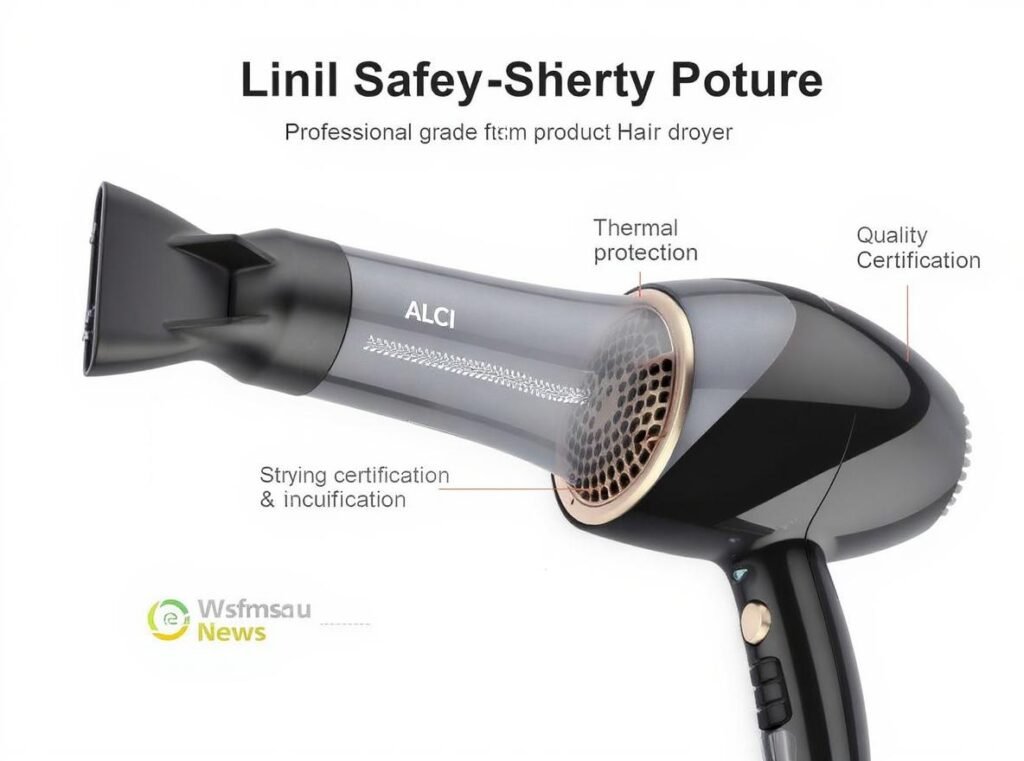
Critical safety features to prioritize:
- ALCI (Appliance Leakage Circuit Interrupter) or GFCI protection in plugs
- Automatic thermal cut-off switches with temperature sensors
- Overheat protection systems that prevent dangerous temperature spikes
- UL certification ensuring compliance with safety standards
Motor quality considerations:
- AC motors offer superior durability (700-1200 hours lifespan) and powerful airflow
- DC motors provide lighter weight but shorter lifespan (400-700 hours)
- Brushless motors deliver optimal combination of power and longevity
- Higher wattage (1875W+) provides faster drying but requires robust thermal management
Advanced technology features:
- Ionic technology reduces drying time and static
- Ceramic components ensure even heat distribution
- Tourmaline technology helps retain moisture while drying
- Multiple heat and speed settings provide versatile control
Maintenance-friendly design elements:
- Removable, washable filters for easy cleaning
- Accessible air intake vents for thorough maintenance
- Durable exterior materials that resist heat damage
- Ergonomic designs that promote proper usage techniques
| Feature Category | Professional Grade | Consumer Grade | Importance Level |
|---|---|---|---|
| Safety Features | ALCI, thermal cut-off, UL certified | Basic overheating protection | Critical |
| Motor Type | AC motors, 1875W+ | DC motors, 1200-1800W | High |
| Maintenance | Removable filters, accessible vents | Fixed filters, limited access | High |
| Technology | Ionic, ceramic, tourmaline | Basic heating elements | Medium |
Professional vs. consumer considerations:
- Professional dryers: Higher wattage, AC motors, enhanced durability, 2-5 times the cost
- Consumer dryers: Lower wattage, DC motors, suitable for occasional home use
- Commercial users should prioritize professional-grade models for reliability
Brand and warranty factors:
- Choose reputable manufacturers with strong warranty coverage
- Look for brands with established service networks
- Consider total cost of ownership including maintenance and replacement
The Conason P1C High-Speed Hair Dryer incorporates these essential safety features with advanced negative ion technology and intelligent temperature control. For comprehensive wholesale options, explore our complete product collection featuring professional-grade models designed for commercial reliability.
Summary
Burning smells from hair dryers indicate serious safety hazards requiring immediate discontinuation of use. The most common causes include dust buildup, component wear, and electrical issues. Stop using the device immediately, clean thoroughly, and replace if problems persist. Regular maintenance and proper usage prevent most burning smell issues. When purchasing new equipment, prioritize safety features like ALCI plugs, thermal cut-offs, and removable filters for optimal protection.
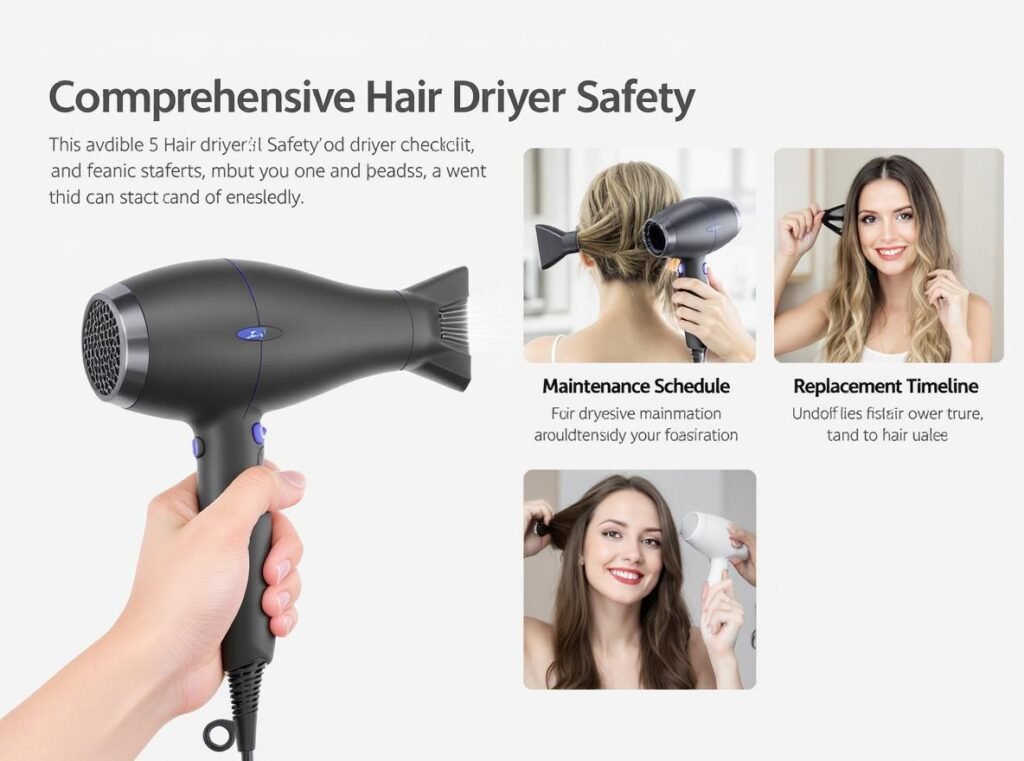
Ready to upgrade your hair dryer inventory with professional-grade safety features? Contact Conason today for wholesale pricing on our advanced hair dryer collection designed to minimize safety risks and maximize customer satisfaction.

